Key takeaways
- Queer women culture fosters authentic connections, promoting resilience and the celebration of diverse identities.
- Activism in queer communities emphasizes personal stories and collective efforts, creating spaces of acceptance and visibility.
- Individual experiences, like those of Malala Yousafzai, inspire activists to confront their fears and advocate for change courageously.
- Successful activism relies on collaboration, self-care, and the power of storytelling to break down barriers and foster empathy.
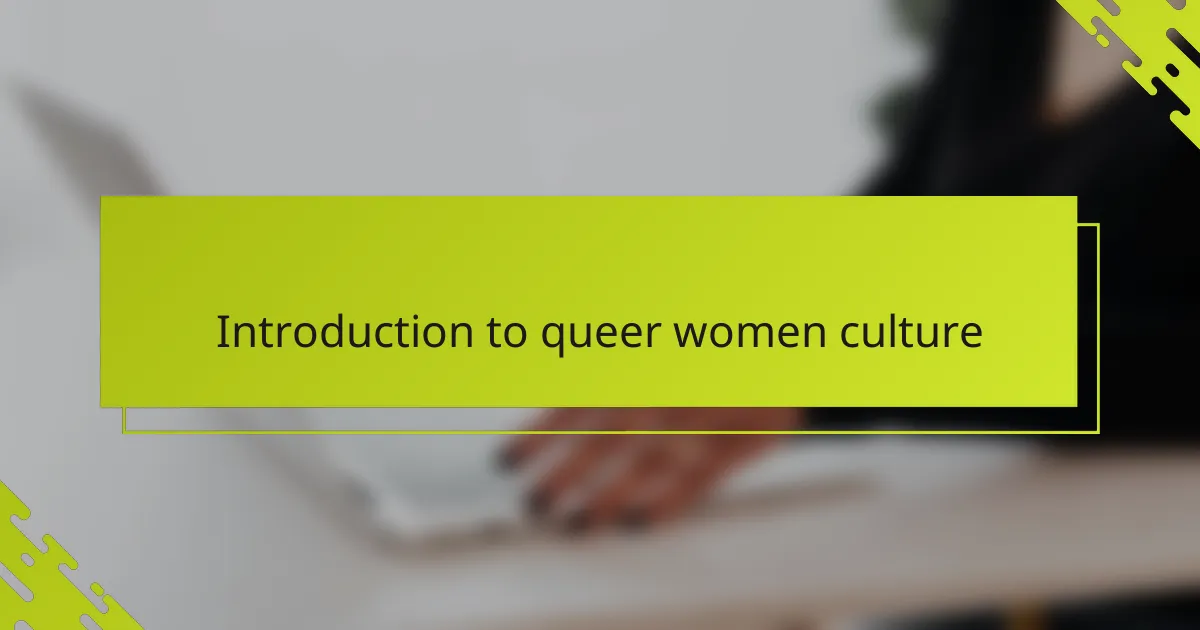
Introduction to queer women culture
Queer women culture is a vibrant tapestry woven from diverse experiences, identities, and expressions. It’s a space where authenticity is not just encouraged but celebrated, creating a sense of belonging that many of us search for. Have you ever felt the power of community in a room filled with people who just get you?
For me, queer women culture has been both a refuge and a rallying cry—a reminder that visibility matters and that our stories have value. It’s not just about labels; it’s about shared joys, struggles, and the fierce resilience that keeps us pushing boundaries. The moments of connection, whether through art, activism, or simple conversations, reveal the profound richness of this culture.
At its core, queer women culture challenges societal norms and invites us to rethink what it means to live authentically. How do we define ourselves when the world tries to box us in? This culture teaches us that identity is fluid, and in embracing that fluidity, we find freedom and strength unlike any other.
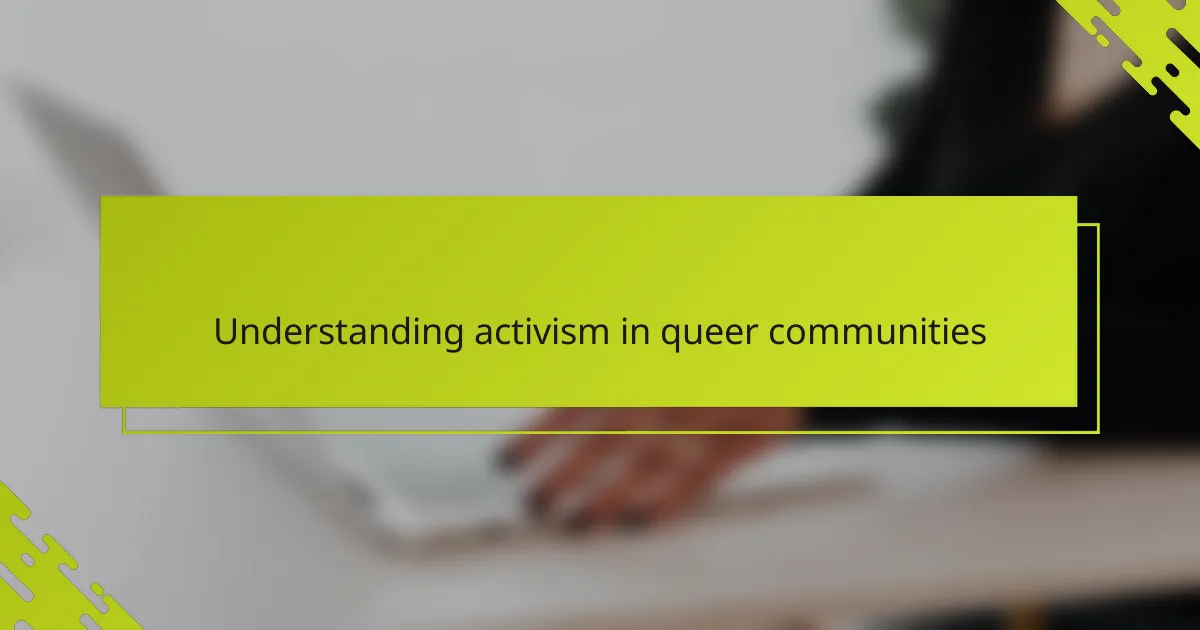
Understanding activism in queer communities
Activism within queer communities is more than just protest signs and marches; it’s a deeply personal act of survival and visibility. When I first stepped into queer activism, I realized it wasn’t just about fighting for rights but about carving out spaces where our stories could breathe freely without fear or judgment. Have you ever felt the weight of invisibility lifting the moment you spoke your truth among people who truly understand?
What strikes me most is how queer activism intertwines with our identities—each advocacy effort reflects our lived experiences, our struggles with acceptance, and our hopes for a world that celebrates difference rather than punishes it. The passion in queer activism often comes from a place of both pain and fierce love, which I’ve witnessed firsthand in community gatherings that felt equal parts healing circle and battleground for justice.
It’s also fascinating how queer activism challenges traditional ideas of leadership and organizing. I’ve seen movements fueled by collaboration and creativity, where everyone’s voice matters, and the intersections of race, gender, and class shape powerful, inclusive strategies. Doesn’t that shift in approach make activism feel more like a collective heartbeat than a solitary battle?
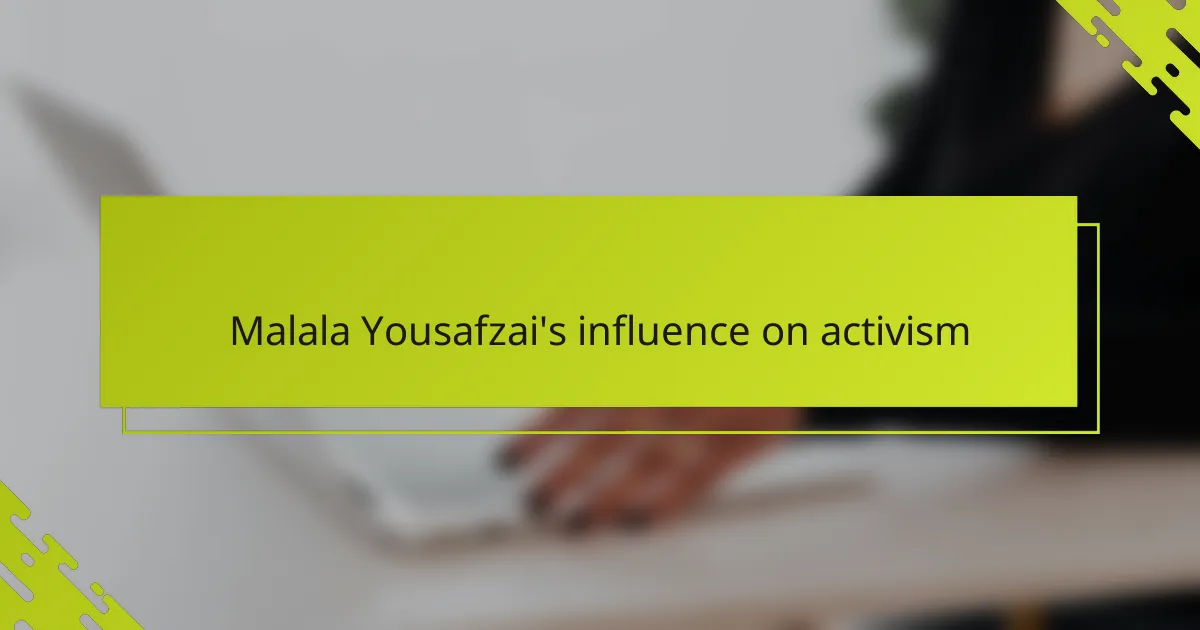
Malala Yousafzai’s influence on activism
Malala Yousafzai’s courage showed me that activism isn’t just about big speeches or headlines—it’s about standing up for something so fundamental that silence feels impossible. When I first learned about her story, I asked myself, “What would it take for me to risk everything for my beliefs?” That question became a spark that pushed me to be bolder in my own activism.
Her voice, so young and yet so powerful, reminded me that change can come from anyone, anywhere. I found myself reflecting on how Malala’s insistence on education and equality echoes in the queer community’s fight for visibility and rights. Isn’t it incredible how one person’s bravery can resonate across different struggles and inspire a ripple effect?
By witnessing Malala’s journey, I realized activism is about resilience in the face of fear and uncertainty. It made me think deeply about my own fears—what keeps me from speaking out fully? Her example challenges me to move beyond those barriers, reminding me activism is a continuous act of hope and courage, even when the path ahead seems daunting.
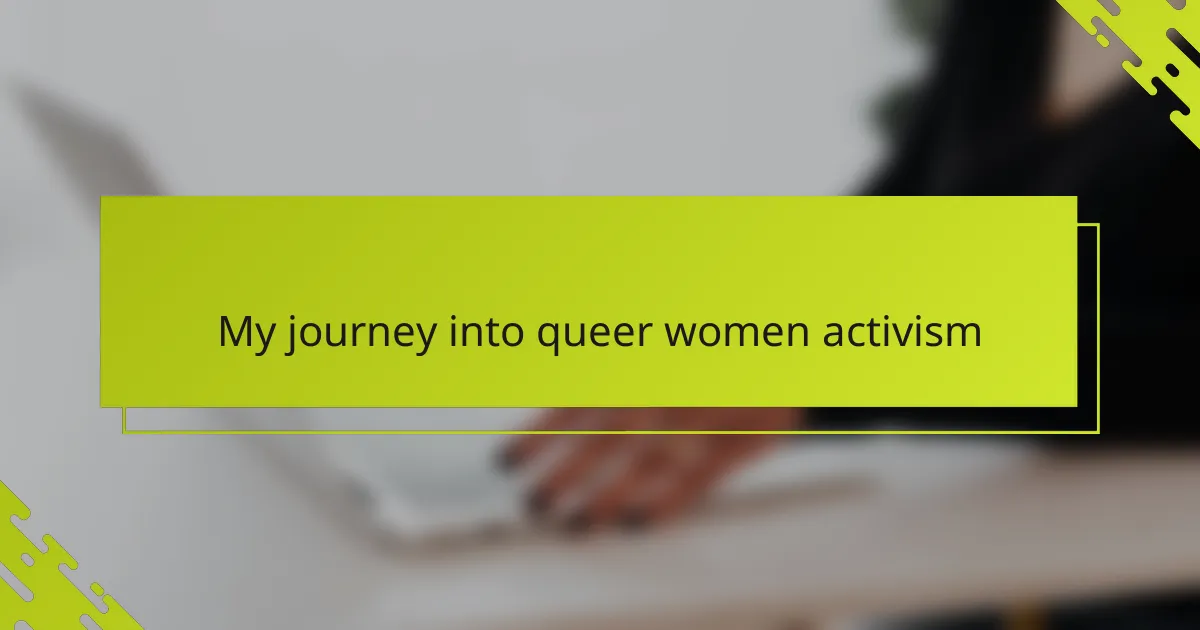
My journey into queer women activism
Stepping into queer women activism felt like reclaiming a part of myself I had tucked away for too long. I remember the first time I spoke at a meeting, voice trembling but heart full—it was both terrifying and liberating. Have you ever felt that rush when silence breaks and your story suddenly matters?
The more I got involved, the more I realized activism wasn’t just public protest; it was also those quiet moments of solidarity where we lifted each other up. I’ve shared tears and laughter with women whose journeys mirrored my own, and in those spaces, I found strength I didn’t know I had. Isn’t it amazing how community can transform vulnerability into power?
Looking back, my journey into activism has been messy, passionate, and deeply personal. Sometimes I question whether I’m doing enough, but then I remind myself that every small action ripples outward. What if we all embraced that imperfect, ongoing journey of pushing for change together?
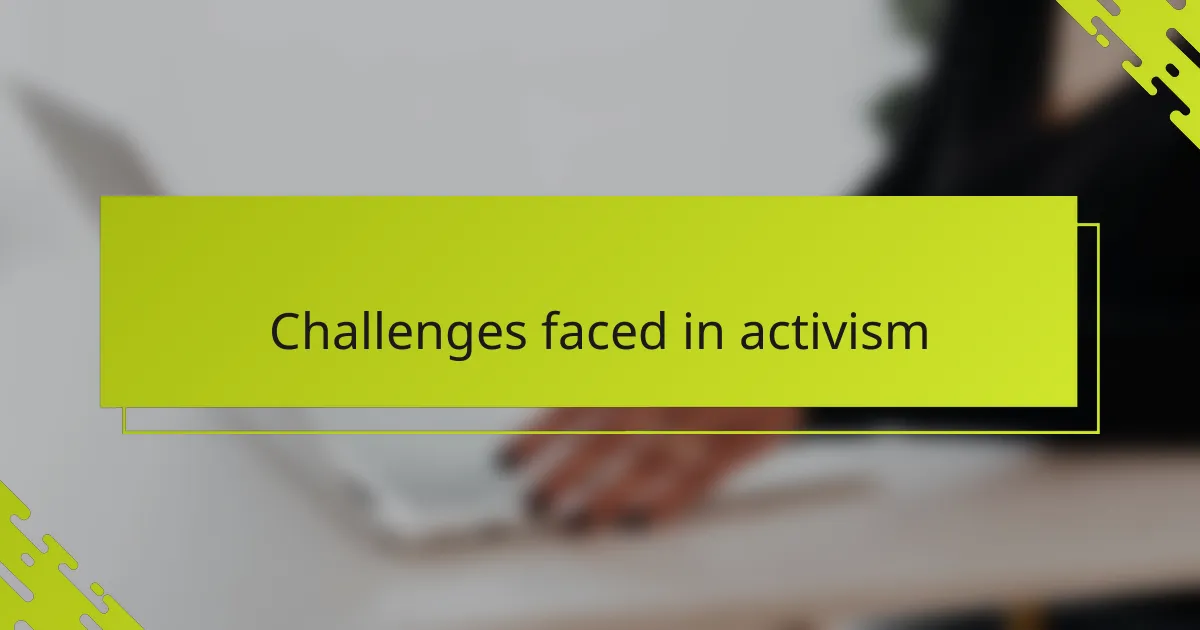
Challenges faced in activism
Activism often feels like walking a tightrope between hope and exhaustion. I’ve faced moments when the weight of prejudice and misunderstanding felt so heavy, I questioned whether my voice could truly make a difference. Have you ever felt drained just by trying to hold space for yourself and others in a world that isn’t always ready to listen?
Sometimes, the challenge isn’t only external but internal—doubts creep in, and the fear of backlash or rejection becomes a silent adversary. I remember hesitating before speaking up at a community event, worried about how my words might be received or whether I belonged in that conversation at all. Yet, those fears didn’t disappear overnight; they became part of the very fire that pushed me forward.
Another hurdle has been navigating the intersections of identity within activism itself. Queer women’s experiences are so varied, and trying to honor that diversity often means confronting disagreements and misunderstandings even within our own circles. It makes me wonder, how can we build a movement strong enough to include all voices without losing the unity that fuels change?
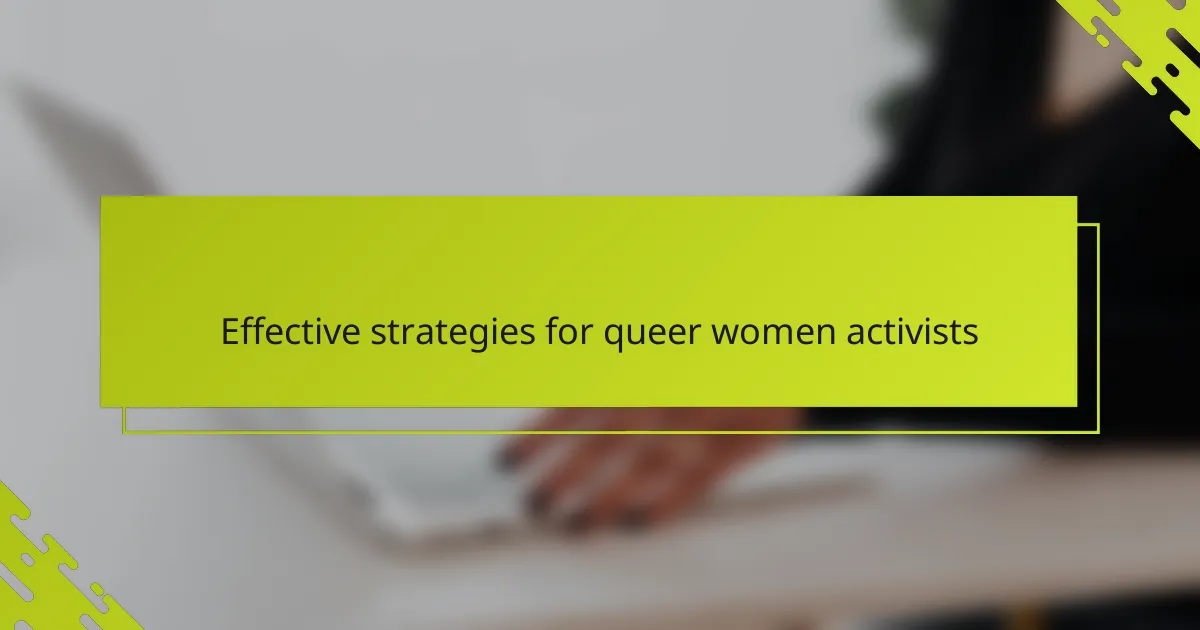
Effective strategies for queer women activists
One strategy I’ve found vital as a queer women activist is embracing collaboration over competition. When we come together, our individual strengths amplify, creating a collective force that’s hard to ignore. Have you noticed how shared goals and mutual support transform isolated efforts into movements that resonate more deeply?
Another approach that’s helped me is prioritizing self-care while staying committed. Activism can be draining, so setting boundaries and celebrating small victories keeps the flame alive without burning out. How often do we remind ourselves that rest is not weakness but a necessary step toward sustained change?
Lastly, I’ve learned the power of storytelling—our personal narratives carry immense weight in activism. By courageously sharing our truths, we break down stereotypes and build empathy in unexpected places. Isn’t it remarkable how one story can shift perspectives and open doors that seemed firmly closed before?
